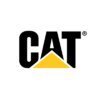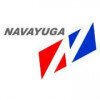Planning Engineer
200+ Planning Engineer Interview Questions and Answers

Asked in SCON Projects

Q. Prepare a small given example site schedule with sequencing and duration determine project duration in MSP/on Paper What is critical path method? How will you identify while making on paper rather than MSP? How...
read moreAnswering questions related to Planning Engineer role
Prepare a site schedule with sequencing and duration to determine project duration in MSP/on paper
Critical Path Method (CPM) is a project management technique to identify the longest path of planned activities to determine the shortest possible project duration
To identify critical path on paper, draw a network diagram and calculate the earliest start and finish times for each activity
Schedule tracking involves comparing act...read more


Q. What is CPI & SPI how to do that how to load resources into the program how to schedule and how many types of scheduling are there how reports are made what is the attachments in a report.
CPI & SPI are performance indices used in project management. Scheduling involves loading resources & creating reports.
CPI (Cost Performance Index) measures the cost efficiency of a project, while SPI (Schedule Performance Index) measures the schedule efficiency.
Resources can be loaded into a program by assigning them to specific tasks in the project schedule.
Scheduling can be done using different techniques such as Critical Path Method (CPM), Program Evaluation and Review Te...read more
Planning Engineer Interview Questions and Answers for Freshers
Asked in Jansen Infrastructure

Q. (a) Why we need to use Cement Why we not use different material Instead of Cement. (b)What is mean by Shear Force And Bending Moment Why Need to calculate. (c) What is Different Between Adhesive And Cohesive. (...
read moreUnderstanding cement, forces in structures, concrete mix design, and masonry techniques is crucial for effective planning in engineering.
Cement is essential for binding materials in construction, providing strength and durability.
Shear force is the internal force that acts parallel to the cross-section of a structural element, while bending moment is the internal moment that causes bending.
Adhesive refers to materials that bond surfaces together, while cohesive refers to the ...read more

Asked in Sumadhura Infracon

Q. What software using for planning? How much proficiency you have on that software?
I use Primavera P6 for planning. I am highly proficient in it.
I use Primavera P6 for planning purposes.
I have been using it for several years and have gained a high level of proficiency.
I am able to create and manage project schedules, track progress, and analyze data using the software.
I am also familiar with other planning software such as Microsoft Project and Excel.
I am always willing to learn new software and stay up-to-date with the latest industry trends.
Asked in Yashasvi Engineering Consultants

Q. what is clim digger function? How much total float is allowed in a schedule? what does negative float represent? What is the kick-off meeting?
The clim digger function is a feature in planning software that helps in analyzing and optimizing project schedules.
Clim digger function is used in planning software to analyze project schedules
It helps in identifying critical paths and optimizing the schedule
It allows planners to simulate different scenarios and evaluate the impact on project timelines
Examples of clim digger functions include Primavera P6's Schedule Analyzer and Microsoft Project's Schedule Inspector

Asked in KPMG India

Q. Productivity of workers and how to calculate task duration from the data
Explaining productivity calculation and task duration estimation
Productivity is measured by output per unit of time or input
Task duration can be calculated by dividing the total work by productivity
Factors affecting productivity include skill level, equipment, and work environment
Task duration estimation should consider potential delays and risks
Use historical data and industry benchmarks to improve accuracy
Planning Engineer Jobs



Asked in Farabi Petrochemicals Company

Q. How do you evaluate a contractor's schedule and ensure the project will be completed as per the schedule?
To evaluate a contractor schedule and ensure project completion as per schedule, I would follow these steps:
Review the contractor's schedule to ensure it is comprehensive and includes all necessary tasks and milestones.
Check for logical sequencing of activities and identify any potential conflicts or constraints.
Assess the duration and resource allocation for each activity to ensure feasibility.
Compare the contractor's schedule with the project baseline schedule to identify a...read more

Asked in Sumadhura Infracon

Q. What is the role of planning engineer in a construction project? Day to day work?
A planning engineer is responsible for creating and managing project schedules, monitoring progress, and ensuring timely completion of the project.
Developing project schedules and timelines
Monitoring project progress and identifying potential delays
Collaborating with project managers and stakeholders to ensure timely completion
Preparing progress reports and presenting them to management
Identifying and mitigating project risks
Ensuring compliance with project specifications and...read more
Share interview questions and help millions of jobseekers 🌟


Asked in Sumadhura Infracon

Q. What is the productivity of manpower in each trade?
Productivity of manpower varies by trade and project requirements.
Productivity is measured in units of work completed per unit of time.
Factors affecting productivity include skill level, experience, tools and equipment, and work environment.
Examples of productivity rates for trades include: electricians - 0.5-1.5 hours per outlet installed, carpenters - 100-200 sq ft of framing per day, plumbers - 2-4 fixtures installed per hour.
Productivity can be improved through training, ...read more

Asked in Reliance Industries

Q. How many levels of schedules are there, and what is their significance?
There are 3 levels of schedules: Level 1, Level 2, and Level 3.
Level 1: Master Schedule - high-level overview of the project
Level 2: Project Schedule - detailed breakdown of the project into smaller components
Level 3: Look-Ahead Schedule - weekly or daily schedule that focuses on specific tasks

Asked in Sumadhura Infracon

Q. What reports did you maintain on a daily, weekly, and monthly basis?
Reports maintained on daily, weekly and monthly basis by Planning Engineer.
Daily progress report
Weekly status report
Monthly project report
Resource utilization report
Cost control report
Risk assessment report

Asked in GE Vernova

Q. What are the basic things required to create a project plan?
Basic things required to create a project plan include defining project scope, setting objectives, creating a work breakdown structure, determining resources, and establishing a timeline.
Define project scope to outline the boundaries and deliverables of the project.
Set clear objectives to ensure the project goals are understood by all stakeholders.
Create a work breakdown structure (WBS) to break down the project into manageable tasks.
Determine resources needed for the project...read more
Asked in Yashasvi Engineering Consultants

Q. What do CPI, SPI, PV, KPI, and AC represent?
CPI, SPI, PV, KPI, and AC represent key performance indicators used in project planning and control.
CPI (Cost Performance Index) measures the cost efficiency of a project.
SPI (Schedule Performance Index) measures the schedule efficiency of a project.
PV (Planned Value) represents the authorized budget assigned to the work scheduled.
KPI (Key Performance Indicator) is a measurable value that indicates how well an organization is achieving its objectives.
AC (Actual Cost) represen...read more
Asked in Shrem group

Q. How can progress be tracked automatically in MSP or Primavera P6?
Automatic tracking in MSP or Primavera P6
Set up a baseline for the project
Enter actual progress and update the schedule
Use the software's tracking features to compare baseline and actual progress
Generate reports to analyze project performance

Asked in Reliance Industries

Q. What do you mean by EVM and how is it used in project management?
EVM stands for Earned Value Management. It is a project management technique used to measure project performance and progress.
EVM compares the actual work completed and the budgeted work to determine if the project is on track or not.
It uses three key values: Planned Value (PV), Actual Cost (AC), and Earned Value (EV).
PV is the budgeted cost of the work scheduled to be done, AC is the actual cost incurred, and EV is the budgeted cost of the work actually completed.
EVM helps i...read more

Asked in Sj Contracts

Q. What is resource planning & logistic planning? And how to prepare it.
Resource planning involves allocating resources efficiently for project execution, while logistic planning focuses on coordinating the movement of resources and materials.
Resource planning involves identifying and allocating resources such as manpower, equipment, materials, and budget for project activities.
Logistic planning involves coordinating the movement of resources and materials to ensure timely delivery and efficient utilization.
To prepare resource planning, assess pr...read more

Asked in GE Vernova

Q. If your current company offered to match the salary of the new role, would you accept their offer and stay?
I would consider various factors before making a decision, such as career growth opportunities, job satisfaction, work-life balance, and potential for learning and development.
Consider the overall job satisfaction and career growth opportunities in the current company
Evaluate the potential for learning and development in the new company
Assess the work-life balance and job security in both companies
Consider any additional benefits or perks offered by the new company
Consult wit...read more

Asked in GE Vernova

Q. What is critical path and what is the float of critical activities?
Critical path is the longest sequence of activities in a project that determines the shortest possible duration. Float of critical activities is zero.
Critical path is the sequence of activities that determines the minimum project duration.
It consists of activities that have zero float, meaning any delay in these activities will delay the project.
Float of critical activities is zero, meaning they cannot be delayed without delaying the project.
Non-critical activities have float...read more

Asked in GE Vernova

Q. What is total float and free float, and what are the differences between them?
Total float is the amount of time an activity can be delayed without delaying the project, while free float is the amount of time an activity can be delayed without delaying the early start of its successor activity.
Total float is the total amount of time that an activity can be delayed without delaying the project completion date.
Free float is the amount of time that an activity can be delayed without delaying the early start of its successor activity.
Total float considers t...read more
Asked in Imperial Builders And Contractors

Q. Have you conducted a risk assessment in a project, and how would you approach identifying potential risks?
I have conducted risk assessments by identifying, analyzing, and prioritizing potential risks in projects.
Conduct brainstorming sessions with the project team to identify risks.
Utilize SWOT analysis to evaluate strengths, weaknesses, opportunities, and threats.
Review historical data from similar projects to identify common risks.
Engage stakeholders to gather insights on potential risks they foresee.
Categorize risks into technical, financial, operational, and external risks.

Asked in Khatib & Alami

Q. What is the significance of activity relationships in Primavera project management software?
Activity relationships in Primavera software help define the sequence and dependencies between tasks in a project.
Activity relationships determine the order in which activities should be carried out.
They help in identifying dependencies between tasks, such as finish-to-start, start-to-start, finish-to-finish, and start-to-finish.
By setting up activity relationships, project managers can ensure that tasks are completed in the correct order to avoid delays.
For example, if Task ...read more

Asked in Khatib & Alami

Q. What is your understanding of Earned Value Management (EVM) in project management?
Earned Value Management (EVM) is a project management technique to track the performance and progress of a project by comparing planned work with actual work completed.
EVM integrates project scope, schedule, and cost to provide a comprehensive view of project performance.
Key EVM metrics include Planned Value (PV), Earned Value (EV), Actual Cost (AC), Schedule Performance Index (SPI), and Cost Performance Index (CPI).
EVM helps in forecasting project outcomes, identifying varia...read more
Asked in Farabi Petrochemicals Company

Q. What is the importance of drawings in preparing a schedule?
Drawings are essential for a planning engineer to accurately understand the project scope and create a realistic schedule.
Drawings provide detailed information about the project, including dimensions, specifications, and design elements.
They help in identifying the sequence of activities and dependencies between different tasks.
Drawings assist in estimating the quantity of materials required for each activity.
They aid in identifying potential clashes or conflicts between diff...read more

Asked in Navayuga Engineering Company

Q. After casting...concrete loss it's moisture content in order to maintain moisture content we give water to concrete to gain early strength and also resist creep formation
Water is added to concrete after casting to maintain moisture content and achieve early strength and resist creep formation.
Adding water to concrete after casting helps to prevent excessive moisture loss.
Maintaining moisture content in concrete is important for proper hydration of cement particles.
Watering concrete can also help in reducing shrinkage and cracking.
By providing moisture, the concrete gains strength faster and can resist creep formation.
Examples of methods to ma...read more

Asked in E2E Rail

Q. What planning work have you done on railway projects?
As a planning engineer in a railway project, my works include developing project schedules, coordinating with various stakeholders, monitoring progress, and resolving any scheduling conflicts.
Developing project schedules and timelines
Coordinating with different teams and stakeholders to ensure smooth execution
Monitoring progress and identifying any delays or issues
Resolving scheduling conflicts and adjusting timelines as necessary
Analyzing project data and generating reports ...read more
Asked in Shrem group

Q. Explain the construction process from start to finish.
Construction process involves planning, designing, procurement, execution, and handover of the project.
Planning and designing the project based on client requirements and budget
Procuring necessary materials, equipment, and labor
Executing the construction work according to the plan and design
Monitoring and controlling the progress of the project
Testing and commissioning the project
Handing over the project to the client
Post-construction activities such as maintenance and repair

Asked in Mun Siong Engineering

Q. What is the tank construction sequence according to API 650 for Fixed Cone Roof and External Floating Roof tanks?
API 650 outlines tank construction sequences for Fixed Cone Roof and External Floating Roof tanks, ensuring safety and efficiency.
1. Site Preparation: Clear and level the site, ensuring proper drainage.
2. Foundation Installation: Construct a stable foundation, typically using concrete or compacted gravel.
3. Tank Shell Erection: Assemble the tank shell using rolled steel plates, welding them together as per specifications.
4. Roof Installation: For Fixed Cone Roof tanks, instal...read more
Asked in Mindra

Q. If a part breaks down, what is the contingency plan?
Create a contingency plan to address the breakdown and minimize impact on project schedule.
Identify critical path activities and assess impact of breakdown on project timeline
Develop alternative solutions or workarounds to mitigate delays
Communicate with stakeholders and update project schedule accordingly
Allocate resources effectively to address the breakdown
Monitor progress closely to ensure timely resolution

Asked in Thermax Limited

Q. What is a look-ahead schedule, and how do you create a one-month look-ahead schedule in Primavera P6?
Look ahead is a planning technique to anticipate future activities. In P6, the 1-month look ahead can be found using filters and layouts.
Look ahead is a proactive planning approach to identify and prepare for upcoming activities.
In P6, the 1-month look ahead can be created by applying filters and layouts to the project schedule.
Filters can be set to display activities that are scheduled within the next month.
Layouts can be customized to show specific columns and information r...read more
Asked in Shrem group

Q. What analyses do you use while planning?
Various analysis techniques are used while planning.
Critical Path Method (CPM)
Program Evaluation and Review Technique (PERT)
Resource leveling
Risk analysis
Cost-benefit analysis
Interview Questions of Similar Designations
Interview Experiences of Popular Companies






Calculate your in-hand salary
Confused about how your in-hand salary is calculated? Enter your annual salary (CTC) and get your in-hand salary


Reviews
Interviews
Salaries
Users










